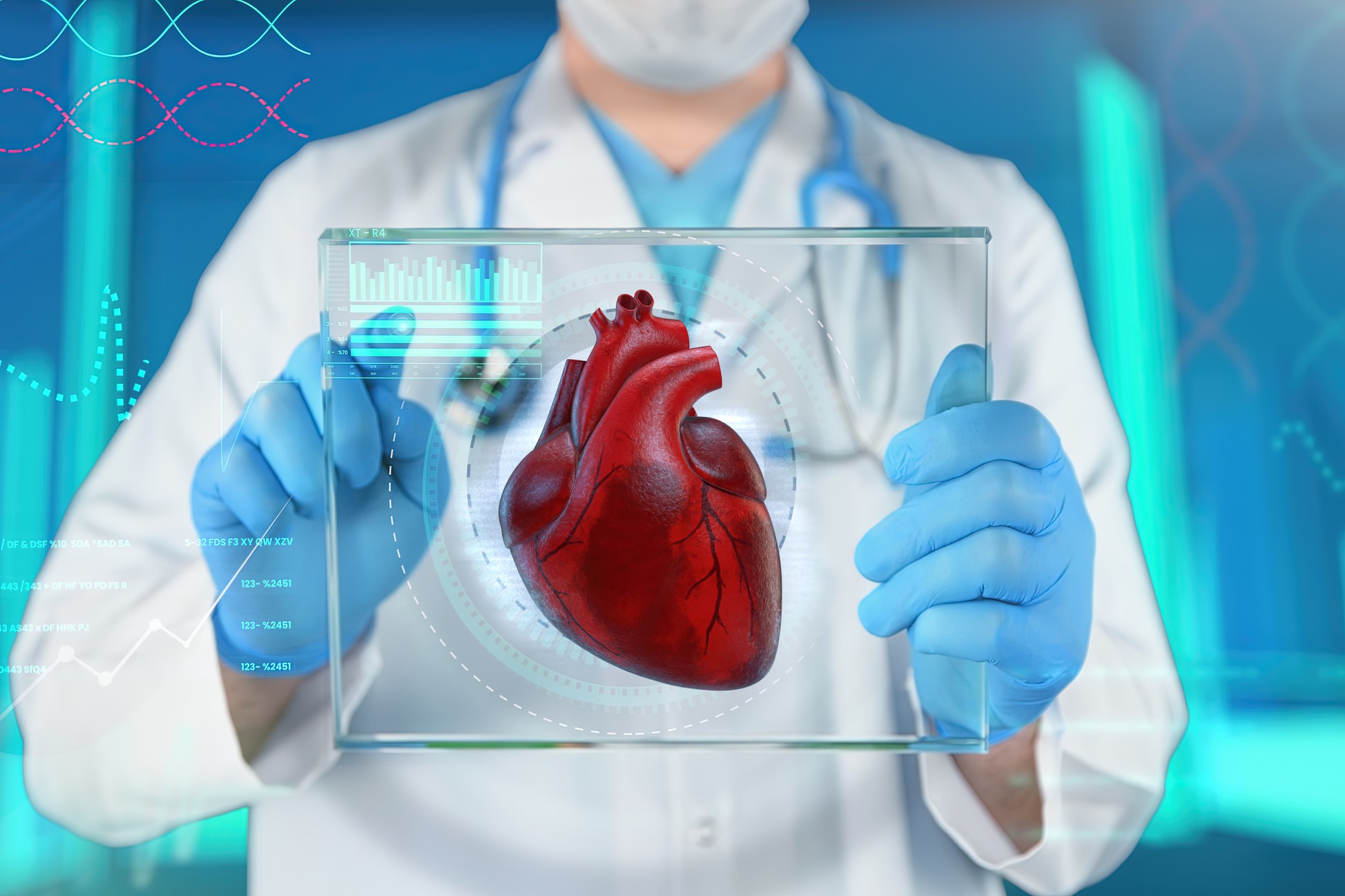
Cardiomyopathies: definition, causes, symptoms, diagnosis and treatment
Cardiomyopathies are pathologies that affect the heart muscle and reduce the capacity of the heart which is no longer able to satisfy its blood pumping properties to the whole body
Cardiomyopathies can be: dilated, hypertrophic and restrictive
Among the most common are dilated cardiomyopathies, which cause problems in the left ventricle that dilates and is unable to pump blood regularly.
Hypertrophic cardiomyopathies see growth and/or thickening of the heart muscle which will see its functionality compromised.
In restrictive cardiomyopathies the heart will lose its capacity and tend to stiffen.
Cardiomyopathy can lead to heart failure, blood clots, heart valve problems, and sudden death.
Causes
Most dilated cardiomyopathies are associated with ischemic causes, such as myocardial infarction and coronary heart disease; in younger patients, idiopathic forms will be found more frequently, the cause of which will therefore not be known.
There may be links with heredity and familiarity, hypertension, heart valve disease, tachycardia, alcohol and drug abuse, chemotherapy drugs, it is rarer that there may be links with infectious diseases.
THE RADIO FOR RESCUERS IN THE WORLD? VISIT THE EMS RADIO BOOTH AT THE EMERGENCY EXPO
In hypertrophic cardiomyopathies the causes will be mainly genetic
In the restrictive forms, which are the least frequent, the causes could be associated with infiltrations of the heart muscle, for other forms the cause is not known.
Symptoms of cardiomyipathies
Typically, in the early stages, heart disease will not show any symptoms; however, as the disease progresses, heart failure-related disorders such as breathing difficulties, swelling of the lower limbs, irregular heartbeats, tachycardia, fainting, dizziness may appear.
Regardless of the type of cardiomyopathy, symptoms will tend to get worse.
In order to prevent cardiomyopathies it will be necessary to follow a correct lifestyle, following a correct diet, carrying out regular physical activity, avoiding smoking for tobacco users, avoiding the consumption of alcohol.
For hypertensive patients, suffering from diabetes mellitus, or with high cholesterol levels, it is recommended to keep these risk ‘factors’ under control.
Diagnosis
The diagnosis of cardiomyopathy is based on accurate medical examinations, in which the presence of cardiological problems in the family history will be investigated.
You may need to do: chest X-ray, electrocardiogram, echocardiogram, exercise testing, myocardial scan, cardiac MRI, blood tests.
From the outcome of the results of these tests it will be seen whether it will be appropriate to perform other tests such as coronary angiography, hemodynamic study, myocardial biopsy.
Regardless of the cardiomyopathy and the present disorder, the most suitable treatment will be followed; The goal of treatment is to reduce symptoms, prevent them from getting worse, and reduce the occurrence of complications.
If you have dilated cardiomyopathy, you will need to take drugs such as ACE inhibitors and beta-blockers, surgery to implant pacemakers and defibrillators, or treatment that includes surgery and drug therapy.
If you have hypertrophic cardiomyopathy, you may need to take beta-blockers, calcium channel blockers, or even antiarrhythmics.
If the pharmacological treatment is not enough, it will be necessary to intervene surgically to implant a pacemaker or defibrillator.
If you have restrictive cardiomyopathy, the focus will be on improving your symptoms.
It may be necessary to reduce the amount of salt and monitor body weight.
You will be prescribed diuretics, medicines that reduce blood pressure or monitor your heart rate.
Knowing the causes of cardiomyopathy will make it easier to prescribe specific treatments.
The disease may progress, even if treatments are followed; therefore, transplantation or implantation of a ventricular assist device will be required.
Read Also
Emergency Live Even More…Live: Download The New Free App Of Your Newspaper For IOS And Android
Interventricular Septal Defect: What It Is, Causes, Symptoms, Diagnosis, And Treatment
Heart Disease: The Atrial Septal Defect
Interventricular Defect: Classification, Symptoms, Diagnosis And Treatment
Arrhythmias: The Alterations Of The Heart
Identifying Tachycardias: What It Is, What It Causes And How To Intervene On A Tachycardia
Cardiac Rhythm Disturbance Emergencies: The Experience Of US Rescuers
Prenatal Pathologies, Congenital Heart Defects: Pulmonary Atresia
Management Of Cardiac Arrest Emergencies
Palpitations: What Causes Them And What To Do
The J-Curve Theory In High Blood Pressure: A Really Dangerous Curve
Why Children Should Learn CPR: Cardiopulmonary Resuscitation At School Age
What Is The Difference Between Adult And Infant CPR
Long QT Syndrome: Causes, Diagnosis, Values, Treatment, Medication
What Is Takotsubo Cardiomyopathy (Broken Heart Syndrome)?
The Patient’s ECG: How To Read An Electrocardiogram In A Simple Way
Stress Exercise Test Inducing Ventricular Arrhythmias In LQT Interval Individuals
CPR And Neonatology: Cardiopulmonary Resuscitation In The Newborn
Supraventricular Tachycardia: Definition, Diagnosis, Treatment, And Prognosis
What Is The Electrocardiogram (ECG)?
ECG: Waveform Analysis In The Electrocardiogram
What Is An ECG And When To Do An Electrocardiogram
ST-Elevation Myocardial Infarction: What Is A STEMI?
Sinus Rhythm ECG: Normal Rate, Tachycardia, Values At The Limits Of The Norm
Atrial Fibrillation: Causes, Symptoms And Treatment
Antiarrhythmic Drugs: Mechanism Of Action And Side Effects
Pediatric CPR: How To Perform CPR On Pediatric Patients?


